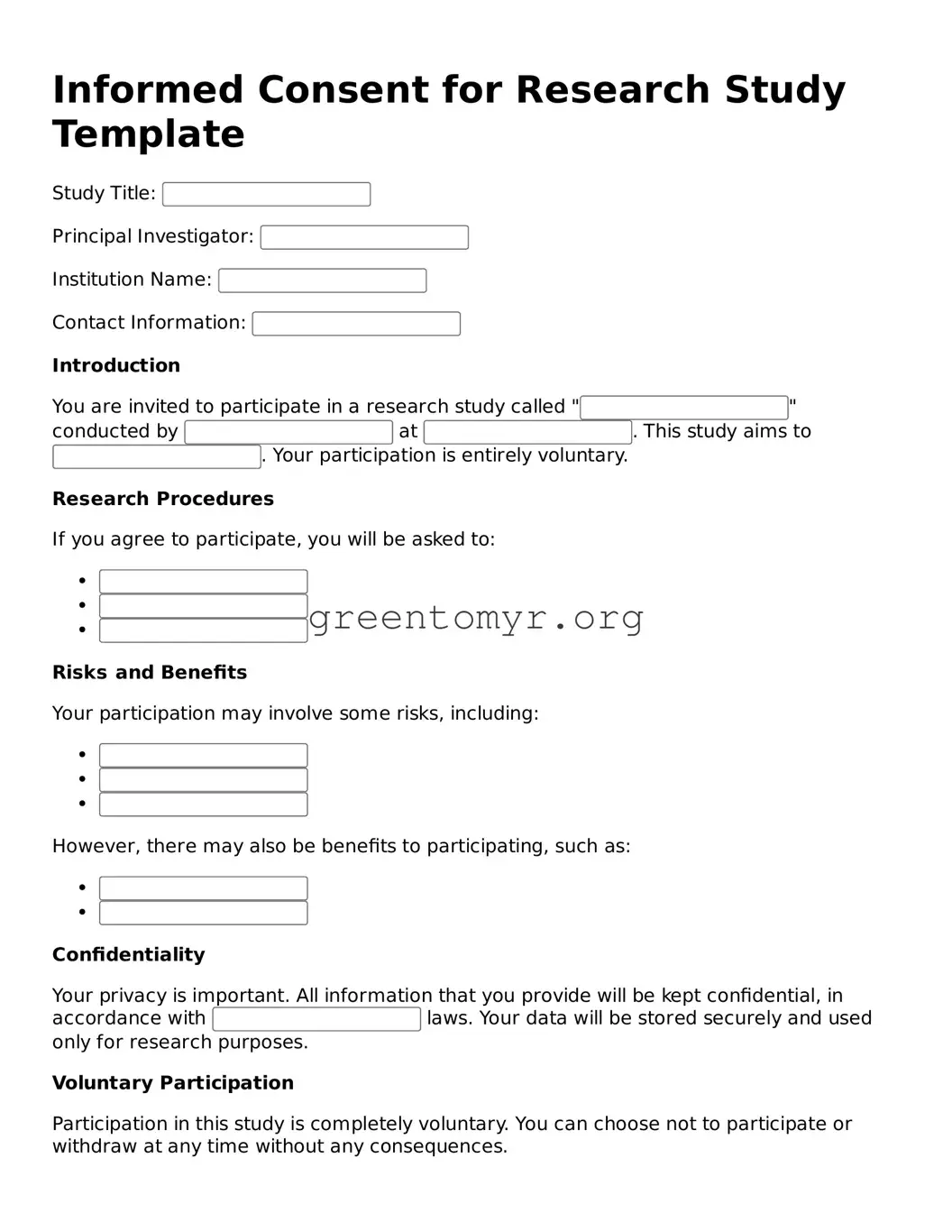Valid Informed Consent for Research Study Form
The Informed Consent for Research Study form is a vital document designed to ensure that participants clearly understand the nature, risks, and benefits of a research study before agreeing to take part. This form fosters transparency and protects the rights of individuals involved in research. To get started, please fill out the form by clicking the button below.
